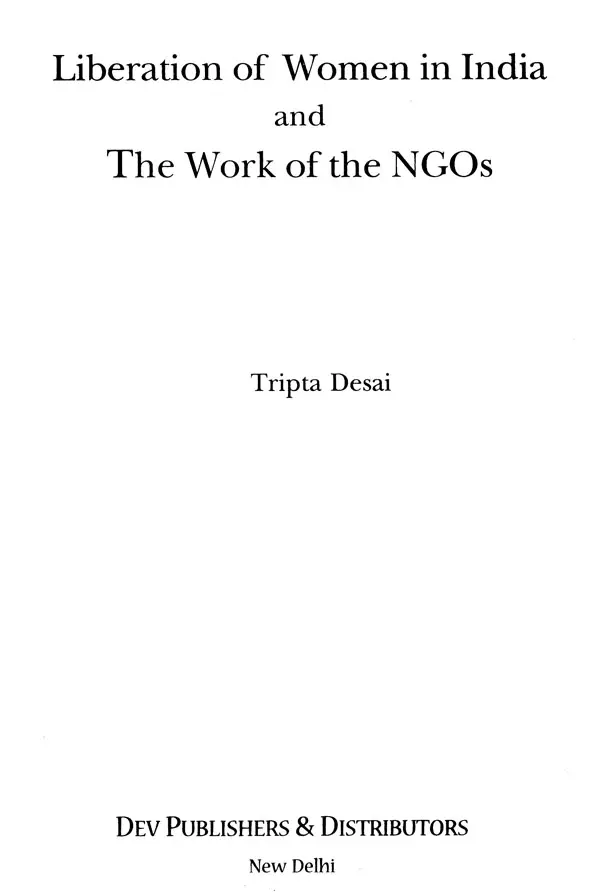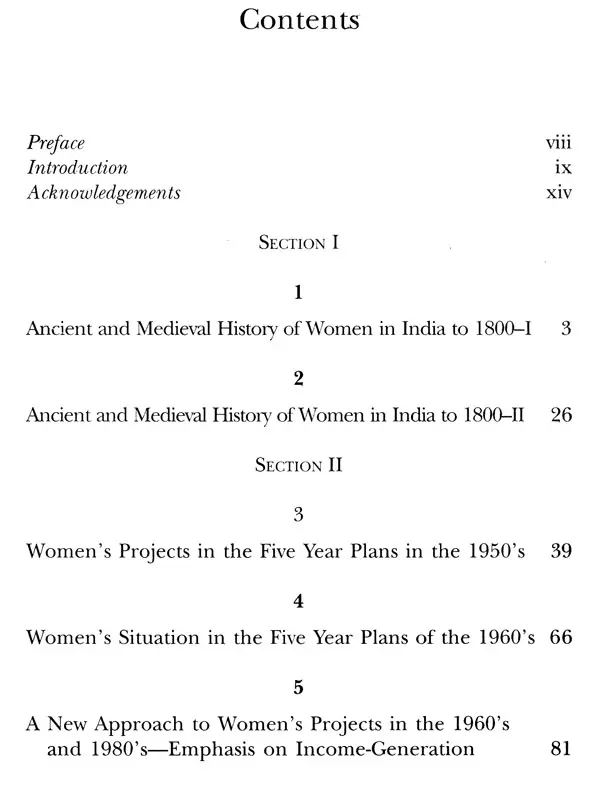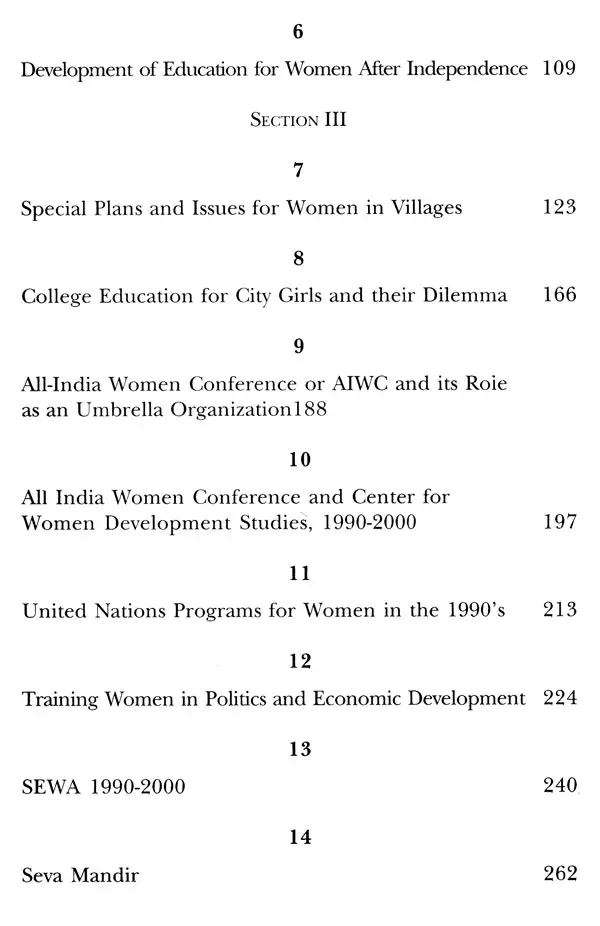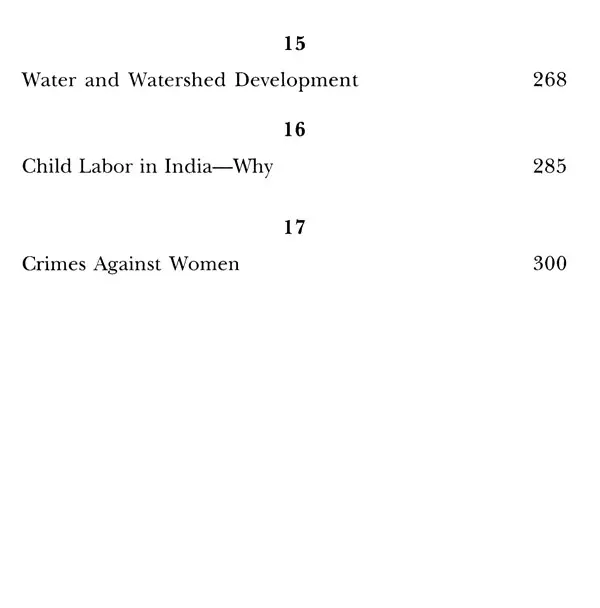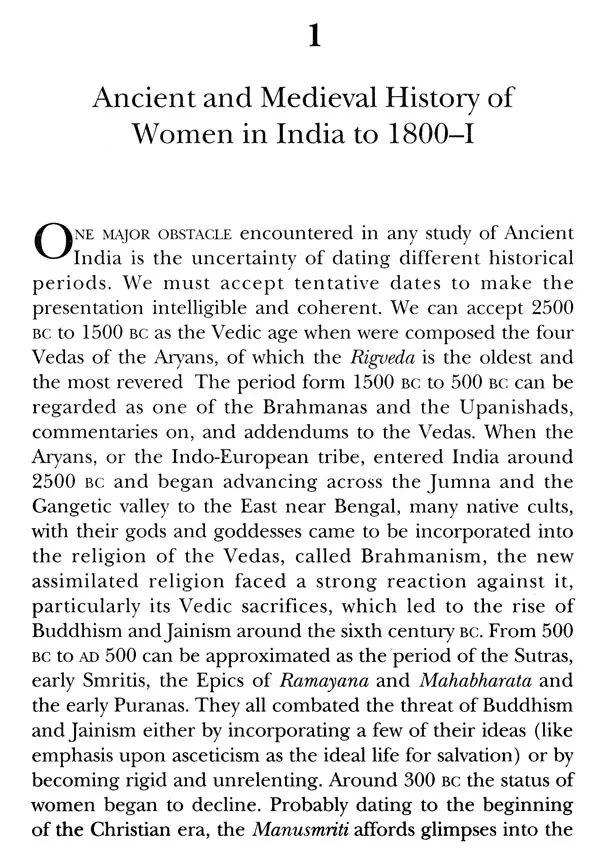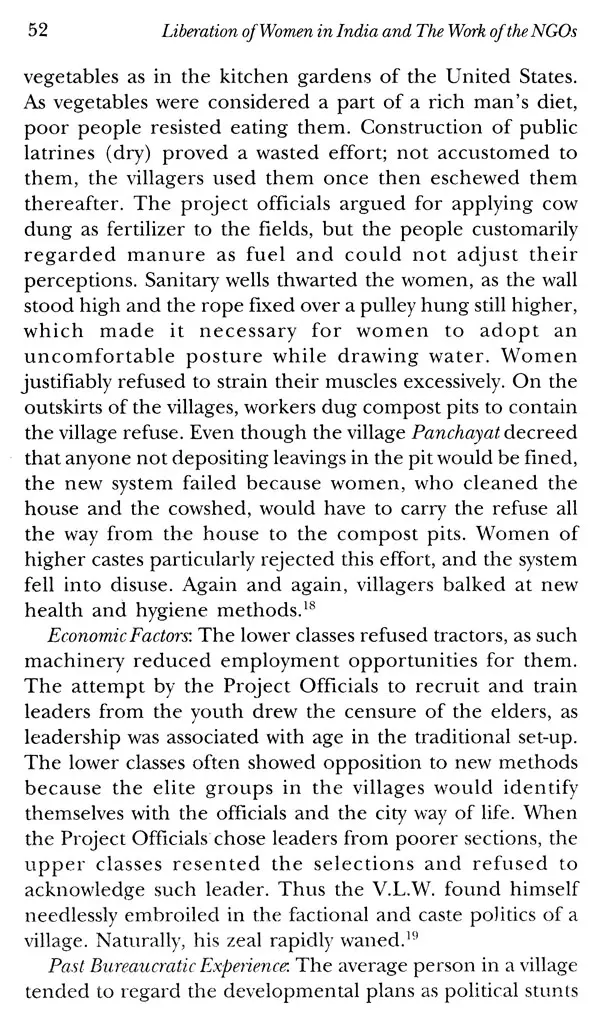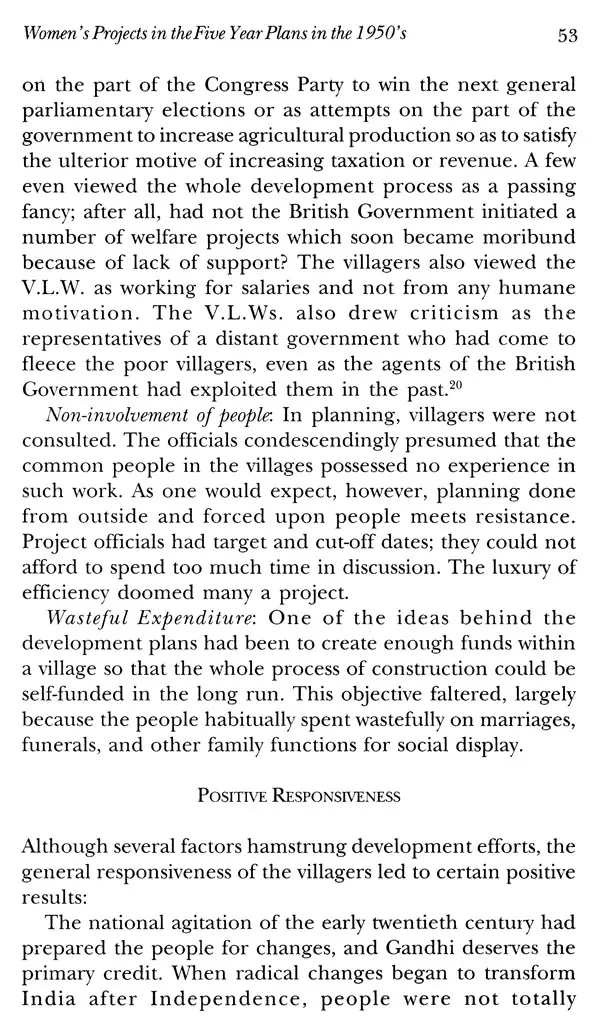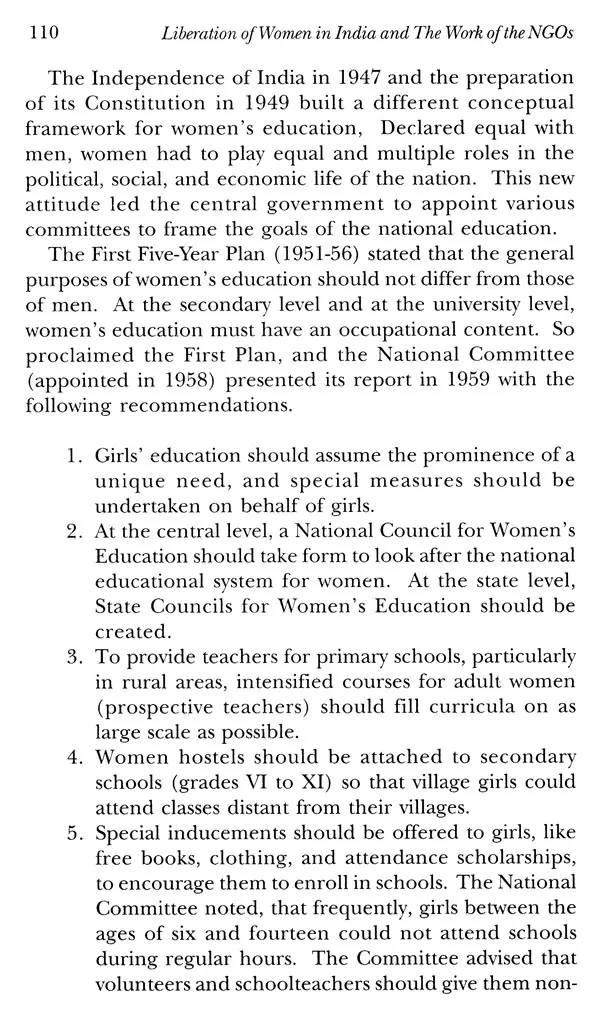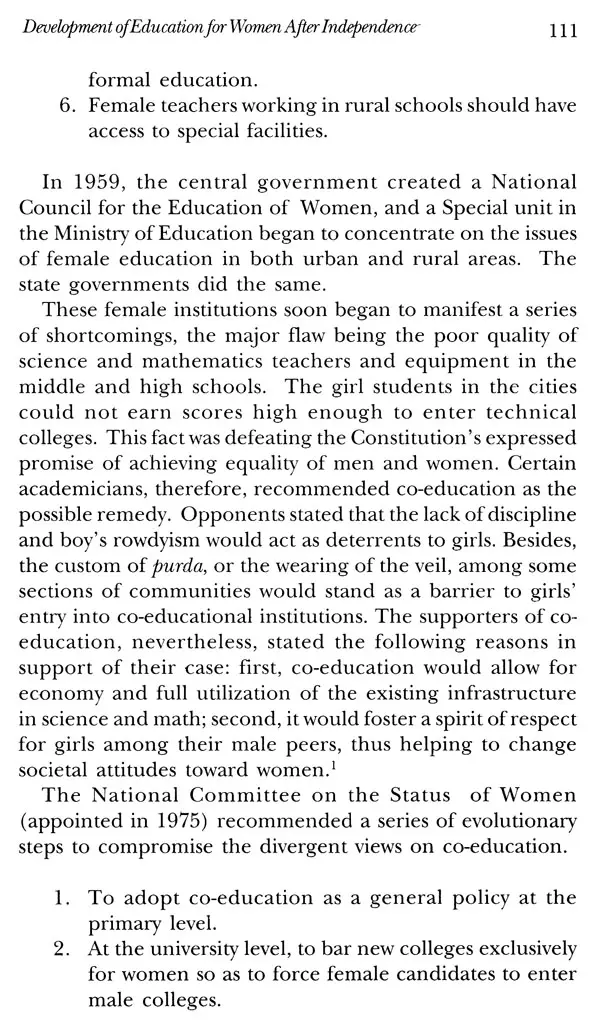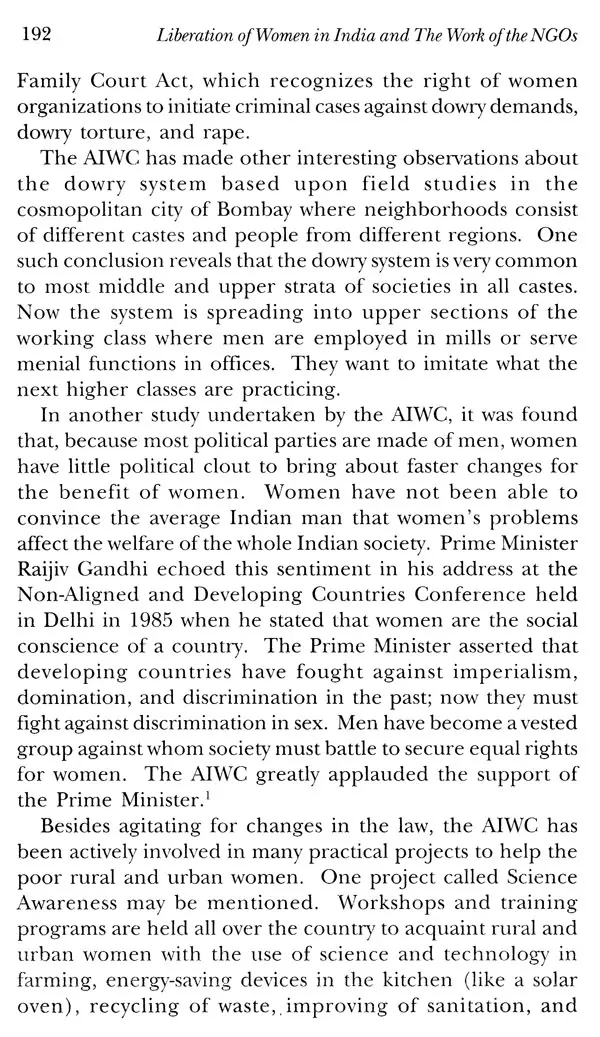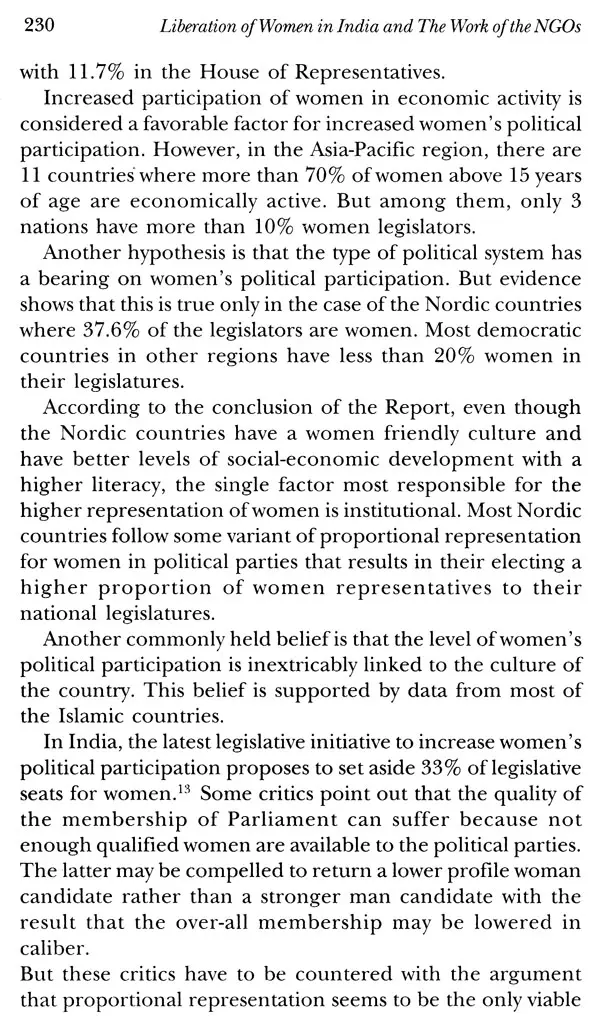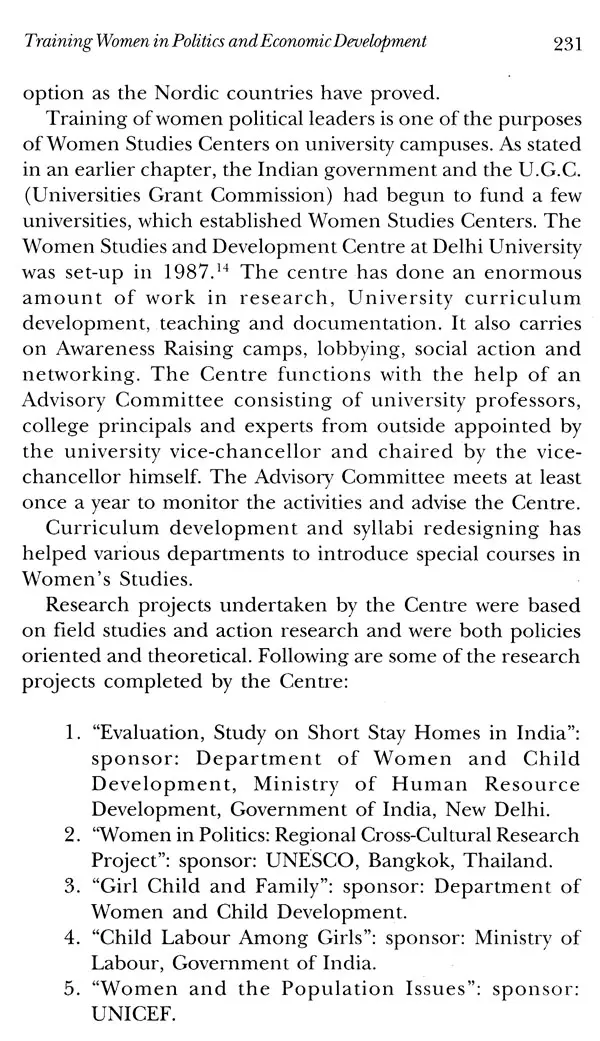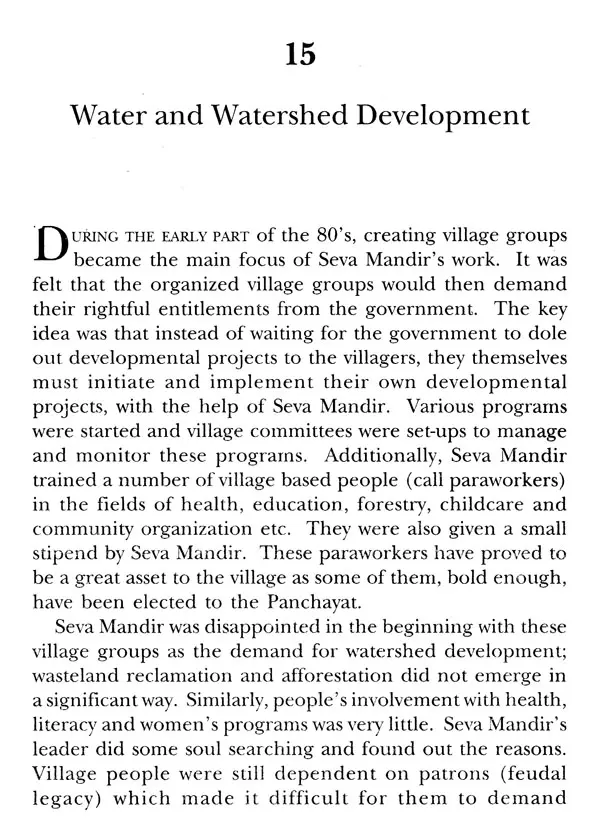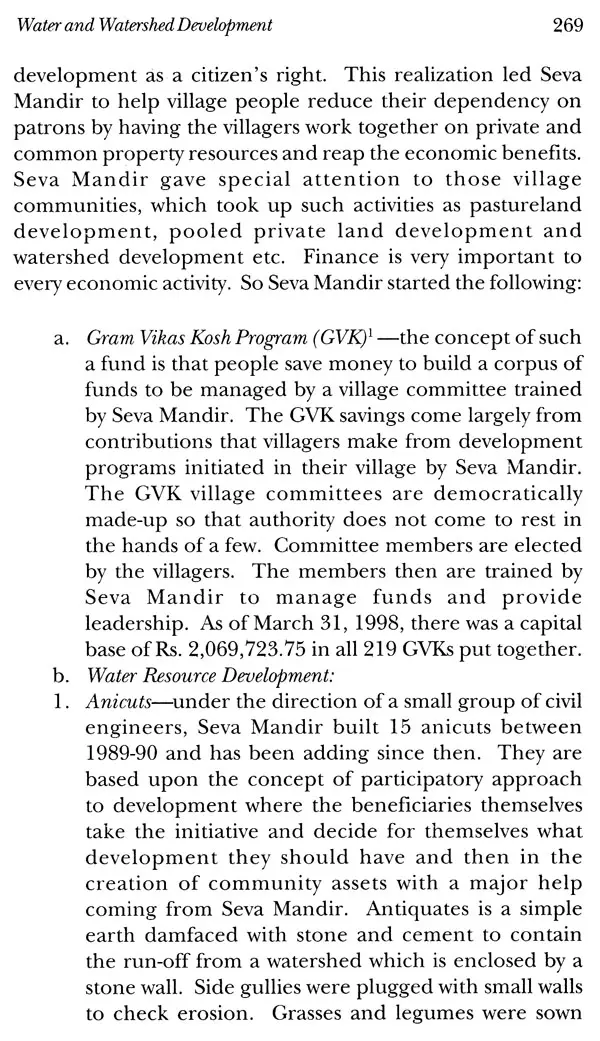
Liberation of Women in India and The Work of the NGOS
Book Specification
| Item Code: | UAO888 |
| Author: | Tripta Desai |
| Publisher: | Dev Publishers and Distributors |
| Language: | English |
| Edition: | 2012 |
| ISBN: | 9789381406007 |
| Pages: | 317 |
| Cover: | HARDCOVER |
| Other Details | 9.00 X 6.00 inch |
| Weight | 510 gm |
Book Description
The present book is about the struggle of women in India to achieve a status of equality which existed in the Vedic Age and in the present Constitution of India. The struggle has been a tough one as it requires the victory of old traditions like caste system and male domination. The book describes the efforts made by the Indian government in the form of Five Year Plans which allots a considerable amount to projects dealing with women and the work of the NGOs (Non Government Organizations) which are heavily involved with defining and raising the status of women particularly in rural areas.
Dr. Tripta Desai was raised in India and she has been here in the USA for the last 45 years. She attended University of Delhi before coming to the USA to do her Ph. D. work at Washington State University, Washington. Her dissertation topic after completing her Qualifying examination in 1964 was INDO AMERICAN WHEAT NEGOTIATIONS OF 1950-1951. She travels often to India which keeps her updated with the events in India. Her specialty in teaching at Northern Kentucky University, USA, is Modernization in India though she handles courses in Europe, Russia and British History too. Her last book, INDIA-USA Diplomatic Relation from 1440-2002 is highly acclaimed by my students.
Dr. Tripta Desal was raised in India and she has been here in the USA for the last 45 years. She attended University of Delhi before coming to the USA to do her Ph.D. work at Washington State University, Washington. Her dissertation topic after completing her Qualifying examination in 1964 was INDO AMERICAN WHEAT NEGOTIATIONS OF 1950-1951. She travels often to India which keeps her updated with the events in India. Her specialty in teaching at Northern Kentucky University. USA, is Modernization in India though she handles courses in Europe, Russia and British History too. Her last book, INDIA-USA Diplomatic Relation from 1940-2002 is highly acclaimed by my students.
It has been realized increasingly that women had been left behind for a long time. Governments and NGOs in different countries are making a great effort to address the issues of women. United Nations drew attention to the women's problems by declaring 1975-85 as Women's Decade. Present work is designed to stress the issues women have faced historically. The Indian government like so many other governments is making an immense effort in the form of Five Year Plans to raise the under-privileged position of women The book goes into all those efforts of the Indian government and also discusses the important role being played by the NGOs in the work of helping women. Since women are half of the world population and bear the responsibility to raise children who would be the future citizens of the country, it makes sense to bring the status of women at par with those of men.
The present work covers a long period from the Ancient time around the time of the Rig Veda-1500 nc or 1000 BC to present day. The reason for including a chapter on the status of Women in the Early Vedic Age is to demonstrate that the status of the early Vedic women was high and women were respected as daughters and when married, were respected as co-partners in the family household. Daughters went through the Upanayana ceremony to initiate them into a student's life. Daughters were encouraged to engage in all kinds of activities like music and public oratory. When married, a wife's presence was mandatory with the husband to perform household religious rituals. The status of women began to decline from the later Vedic Age or at the time of the Brahamanas till we come to Manusmriti around 300 BC or so. Child marriage, denial of education to girls, prohibition of widow marriages came to be well accepted. Manu spoke highly in favour of those restraints on women. Subsequent invasions of India by different tribes most of whom were Muslim, further solidified the low status of women as the invaders would rape and tend to carry away young girls. The low status of women continued during the British rule too because the colonial rulers did not want to disturb the social order and cause any kind of rebellion against their rule. Manusmriti continued to dominate the public thought whenever women were concerned. The British did establish colleges, universities and public elementary and post secondary schools. A few women in the cities did avail of that opportunity. But the bulk of the Indian women remained suppressed as eighty to eighty-five of the population lived in villages. Preceding discussion is in part one which describes the status of women from Ancient time to the End of the British rule.
Book's Contents and Sample Pages
